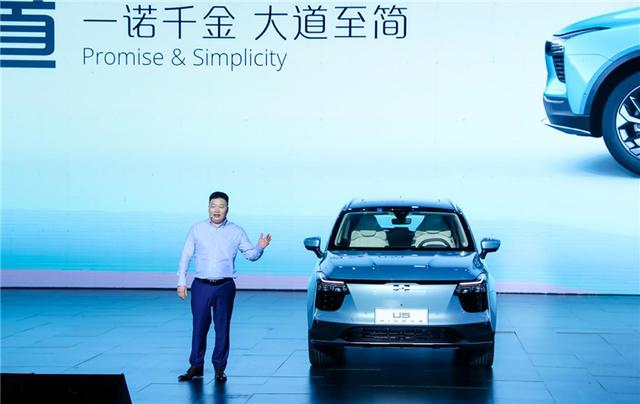Is the price difference between high-end and low-end models up to 100,000 RMB?
At the official launch of Aiways’ first mass-produced car model – the Aiways U5 on December 19, 2019, in Wanning, Hainan, a total of four models were released, positioned as mid-to-high-end pure electric SUVs with a price range of RMB 197,900 to RMB 292,100.
Aiways released a total of four models at the press conference, with corresponding prices and ranges as follows:
Aiways U5 ING: 197,900 RMB, NEDC range of 403 km.
Aiways U5 ING+: 222,100 RMB, NEDC range of 503 km.
Aiways U5 PRO: 247,900 RMB, NEDC range of 503 km.
Aiways U5 PRO+: 292,100 RMB, NEDC range of 623 km.
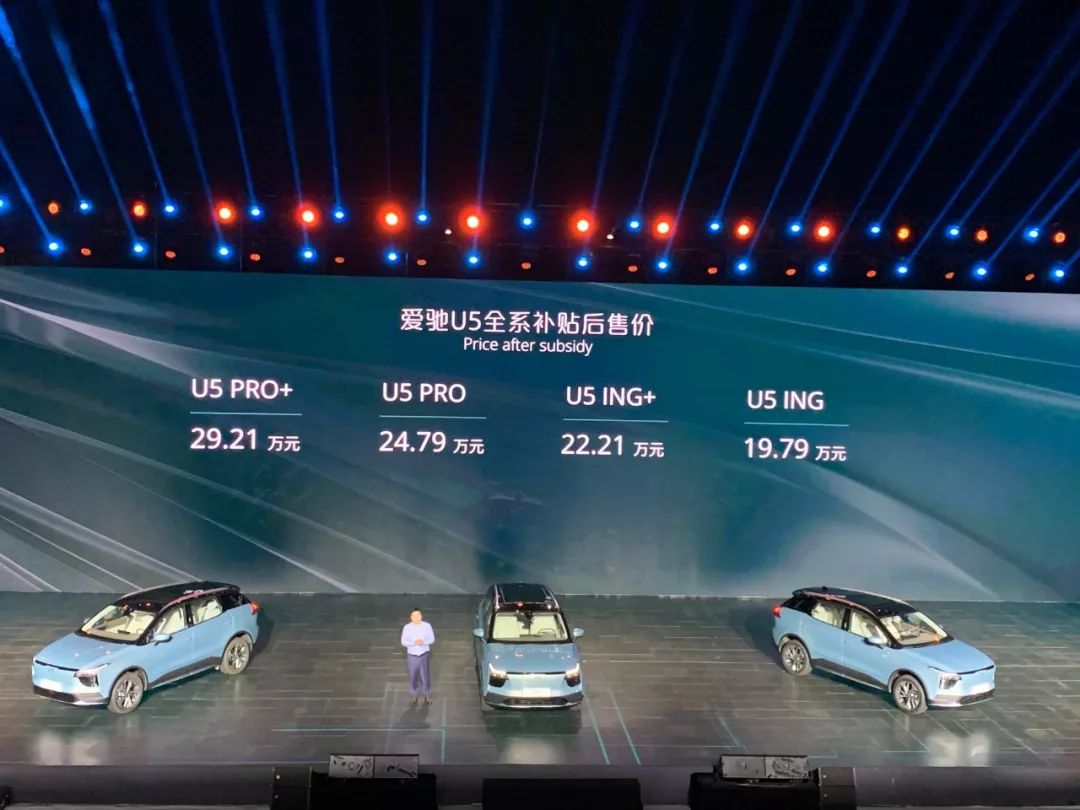
After we released the price of the Aiways U5 on Weibo, some netizens commented, “A car that costs over 200,000 RMB has a price difference of up to 100,000 RMB between high-end and low-end models.”
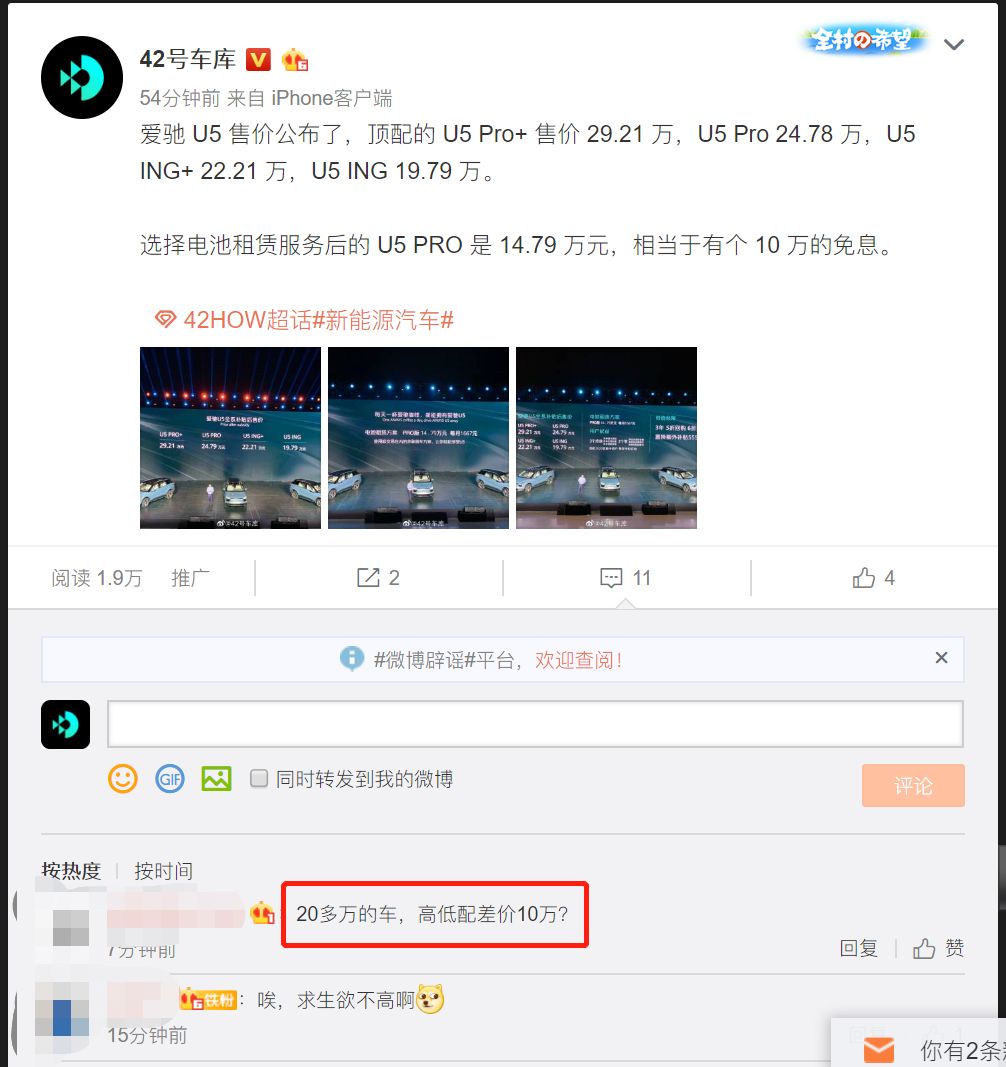
Indeed, it is not common to have such a large price difference in the price range of 200,000 to 300,000 RMB. The main reason for the high- and low-end price difference of 100,000 RMB for the Aiways U5 is the battery pack.
Although the price of the low-end model has dropped below 200,000 RMB, it only comes with a 53 kWh battery pack, and the corresponding NEDC range is only 403 km. Nowadays, the mainstream range has reached 500 km, and a range of 403 km is obviously unimpressive.
Both the ING+ and PRO models are equipped with a 65 kWh battery pack, and the corresponding NEDC range can reach 503 km. At the end of 2019, a range of over 500 km was not considered bad, but it can only be considered as a passing grade. As a new car-making force that has just emerged, Aiways needs some outstanding data to leave a deep impression on consumers.Let’s set our sights on the top-of-the-line PRO+ model, which boasts an 83 kWh battery and a NEDC range of 623 km, second only to Guangzhou Automobile Group New Energy’s Aion LX and the Tesla Model 3. However, the PRO+ model’s price has risen to 292,100 yuan, a full 44,200 yuan increase from the second-highest trim level due to the significant increase in battery capacity.
But I recommend that everyone focus on the second-highest trim level, as the difference between the top-of-the-line and second-highest trim levels is only the battery.
One very core function of the Aiways U5 is the “green range extender.”
There is a very large space beneath the trunk floor of the Aiways U5 that can accommodate an 18 kWh battery pack, which can provide an additional 120 km of NEDC range.
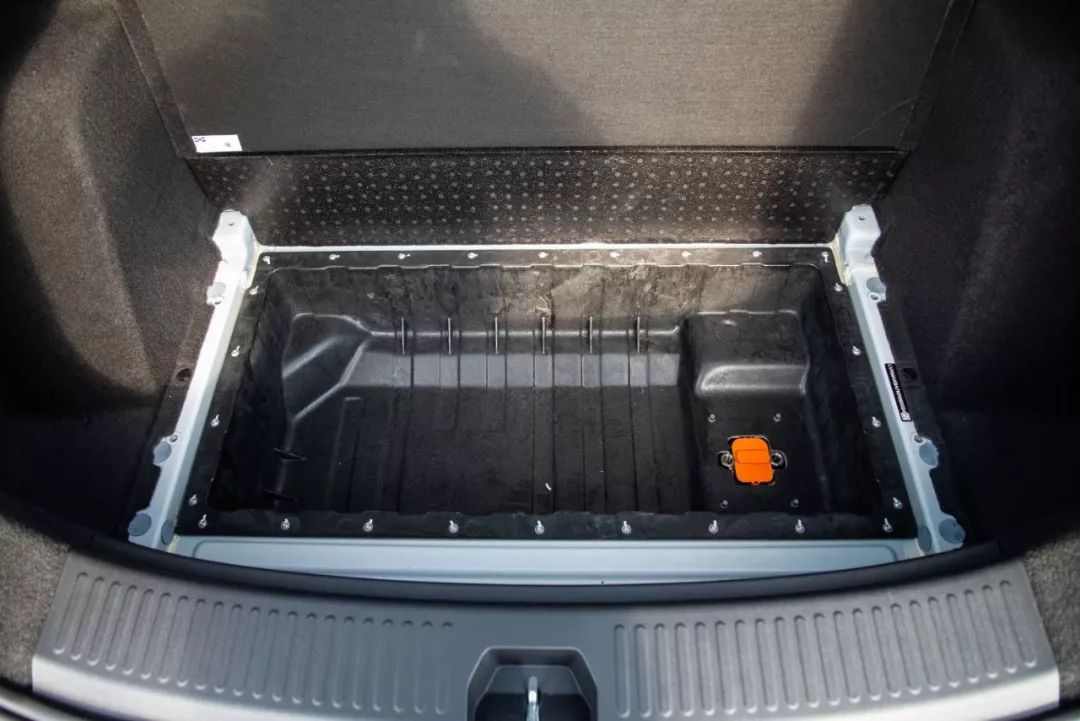
Currently, the cost of power batteries remains high, accounting for a large proportion of the vehicle price. However, consumers are hoping for longer range, which means larger battery packs and higher prices. Finding a reasonable balance between range and price is crucial.
Aiways has ingeniously separated the cost of the battery so that a 18 kWh “green range extender” can be rented for long-distance driving, adding 120 km of range. The 503 km of range for daily commuting is sufficient for most consumers’ needs.
On this point, Aiways has something in common with NIO’s battery swapping, but has also taken its own unique path.
However, it is regrettable that according to the configuration table on the Aiways official APP, the lowest-level ING and PRO+ models won’t be delivered until the second half of 2020, which likely means the “green range extender” won’t be officially online until then either.
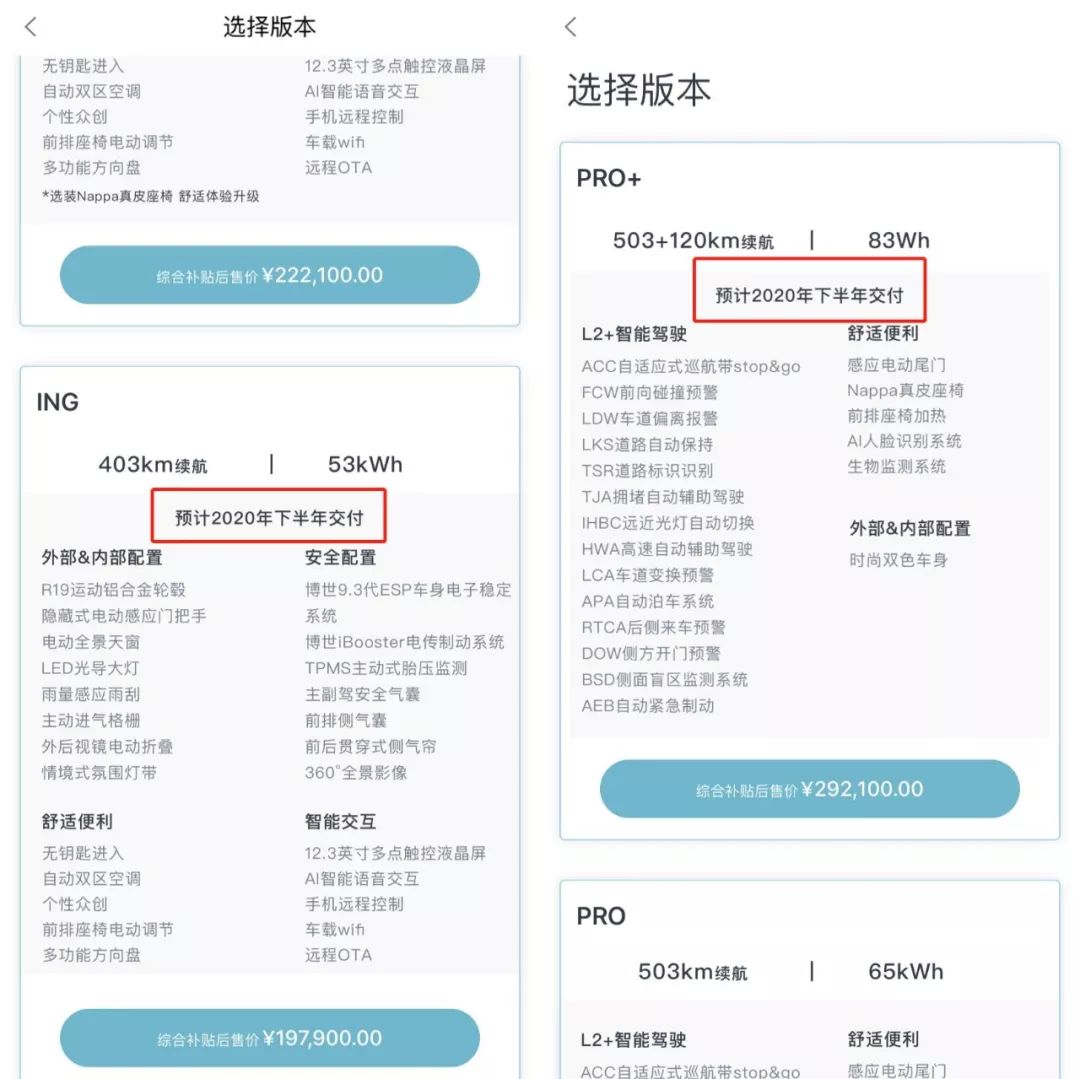
In addition, at this launch event, Aiways did not indicate whether the ING model with a range of 403 km could be equipped with the “green range extender,” only stating that it would provide cost-effective solutions for users to choose from in the future.
The Most Difficult Price Range to Sell
After analyzing these four different trim levels, let’s take a look at which competing models are in this price range.In the price range of 200,000 to 300,000 RMB, there are both new electric vehicle manufacturers like the WM Motor EX6 and domestically developed pure electric SUVs like the Aion LX. In terms of body size, the Aiways U5 does not have any advantages. However, the WM Motor EX6 and Aion LX have a range of 520 km and 650 km, respectively. Despite being a newcomer to the new energy market, it seems that Aiways U5 still wants to compete head-on with these two “veterans.”
In addition to pure electric vehicles, there are also many fuel and hybrid vehicles in the 200,000 to 300,000 RMB price range. Obviously, Aiways does not aim to attract its first wave of customers through price.
So the question arises: how will Aiways sell its vehicles when subsidies are declining next year and the new energy market becomes more severe?
The European market.
In July of this year, the Aiways U5 conducted a 60-day Asia-Europe cross-border challenge spanning 10 countries and covering over 14 million kilometers from Xi’an, China to Frankfurt, Germany.
China’s new energy market has already had an intense battle under policy guidance, while Germany’s new energy market has just started to show some signs of growth. Not only are there fewer competitors, but subsidies are also very high. New energy vehicles priced at less than 40,000 euros can receive a subsidy of 6,000 euros, and those priced between 40,000 and 60,000 euros can receive a subsidy of 5,000 euros.
This is obviously a good time to enter the European market, but Aiways’ first step did not go smoothly.
Yesterday, Euro NCAP released its latest batch of crash tests, including the Aiways U5. As a new electric vehicle manufacturer participating in E-NCAP, we highly praise Aiways for this behavior. Unfortunately, the U5 only received three stars in the test results.
In a post-event interview today, we asked Roland Gumpert, Aiways’ Chief Product Officer, about the safety of the U5.
Roland Gumpert’s answer is as follows:We are a new company, so we were not prepared for the E-NCAP at all. I am personally very proud that we got 3 stars in this situation, because we had no preparation and even had not undergone any testing before participating in E-NCAP. Some companies under the Volkswagen group, such as Skoda, also have some car models that received 3 stars. They are big companies with a lot of experience, but still only got 3 stars. On the other hand, we are a startup company and we had no time for preparation. Therefore, we think this is a good result. In the next test, we will definitely achieve better results, because through this test, we know what we need to do and what preparation we need. Therefore, we believe that we can achieve a good result in the next test.
Review of Aiways U5
Finally, let us review the Aiways U5.
Product highlights:
- Optional green range extender package, with a maximum range of 623 km;
- Energy density of the battery pack is 181 Wh/kg;
- Lightweight upper steel and lower aluminum structure;
In terms of appearance, the Aiways U5’s front headlight group is slightly sharp, and the front face is relatively simple. The side of the car adopts a suspended roof and hidden door handle design, and the tail light is a penetrating design style. Overall, it does not look as stunning as the NIO ES8, and looks much more plain.
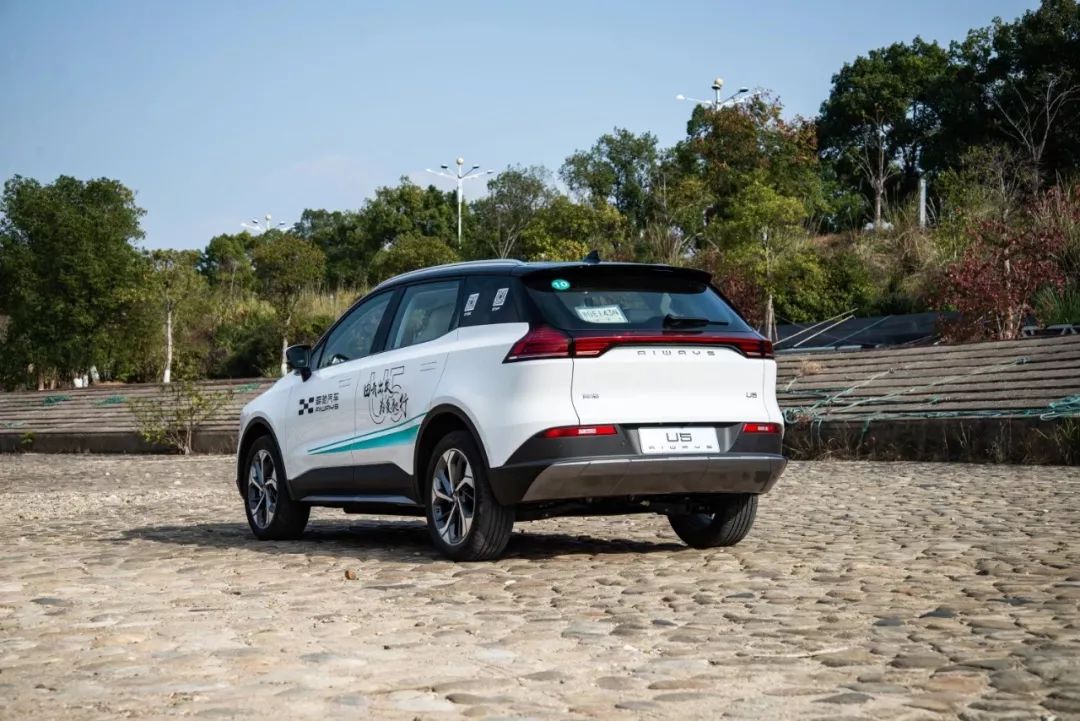
One distinctive feature of the Aiways U5 is that the charging port adopts a hidden style, integrated under the left front headlight, which is different from most pure electric vehicle models. One of the purposes of doing this is to enhance the overall sense of integration of the vehicle body.
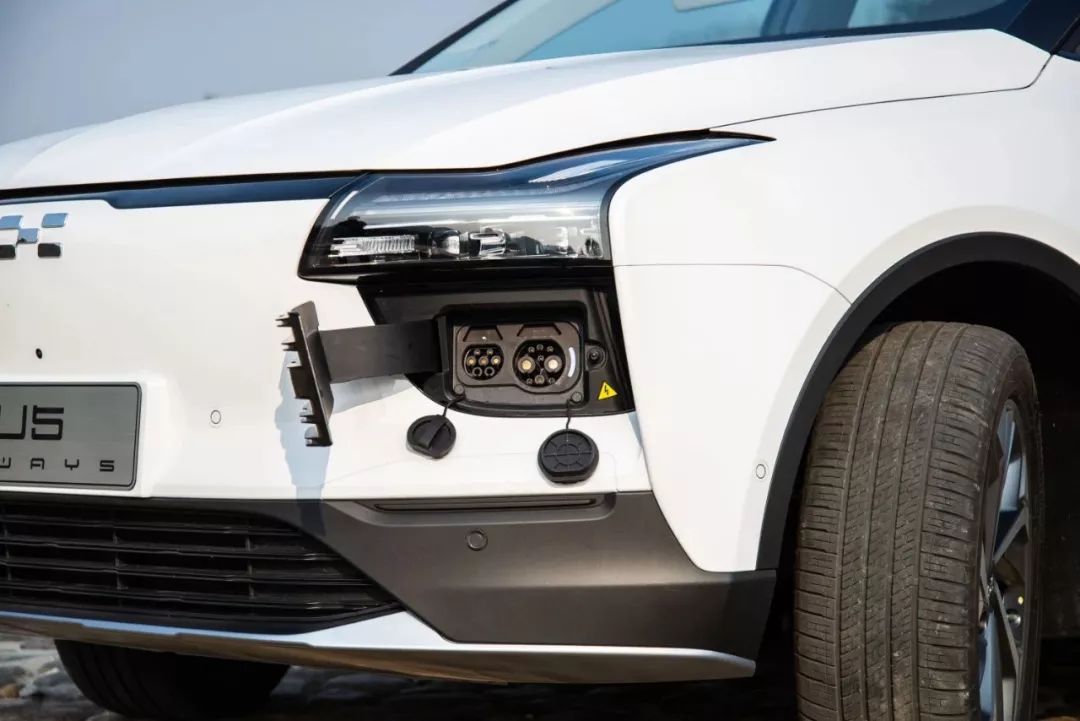
In terms of the interior, the new car adopts a brown and beige color design. The center console has a strong three-dimensional sense, and the overall style is minimalist. There are almost no physical buttons except for the shift knob, handbrake, auto hold, and autopilot parking buttons on the side. Of course, this is also the popular style nowadays.
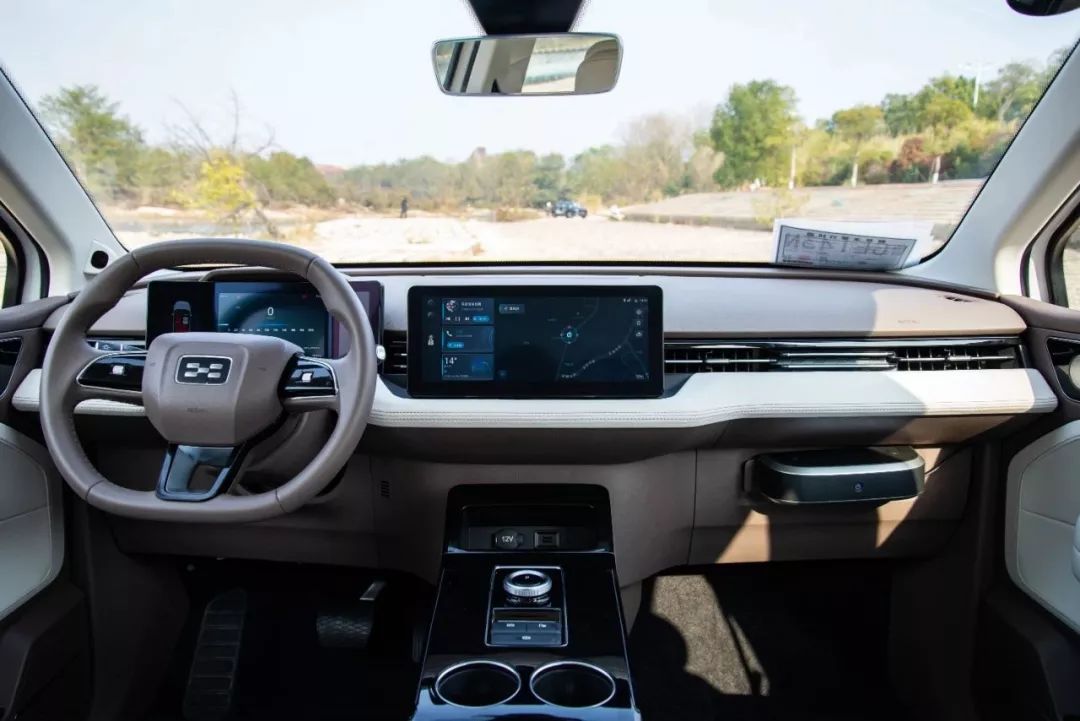 In addition, the Ai Chi U5 adopts a “dual flat” three-piece steering wheel design, which is flat-bottomed and flat-top. It visually enhances the sportiness and has a moderate grip. Currently, the steering wheel function area adopts a black glossy material, which causes the function keys to not display clearly. In the final delivered vehicles, this area will be replaced with physical buttons. ACC adaptive cruise control and other functions will also be unlocked.
In addition, the Ai Chi U5 adopts a “dual flat” three-piece steering wheel design, which is flat-bottomed and flat-top. It visually enhances the sportiness and has a moderate grip. Currently, the steering wheel function area adopts a black glossy material, which causes the function keys to not display clearly. In the final delivered vehicles, this area will be replaced with physical buttons. ACC adaptive cruise control and other functions will also be unlocked.
Like the hidden charging port, the 4.2+7+4.2-inch three-fold instrument panel has become the biggest feature of the interior. Although this design is innovative, the black border of the three-fold instrument panel also affects the texture of the interior to a certain extent. This feature has also become one of the disadvantages.
The central control 12.3-inch large screen integrates navigation and functional cards, and supports remote control opening of the sunroof, windows, etc. In the future, it will also support OTA to achieve functional upgrades.
Also, the Ai Chi U5 has cancelled the traditional glove box and replaced it with a set of buckles. There are six such spaces in the car, and owners can choose air purifiers, business small table boards, storage racks, etc. according to their needs. This is also a kind of personalized service.
Regarding material and workmanship, the central control and door panel area are wrapped in large areas of soft materials, which are generous in materials and have a better tactile feel.
In terms of body size, the new car’s length, width, and height are 468018651700 mm, and the wheelbase is 2800 mm. It is officially positioned as an A+ class SUV.
In terms of NVH, during the test drive, the Ai Chi U5’s NVH performance was quite good at speeds below 100 km/h, and tire noise and wind noise were well suppressed. However, when the speed exceeded 100 km/h, the wind noise began to gradually appear, but it was still acceptable.
In terms of the battery, the Ai Chi U5 adopts a Ningde era NCM 811 battery pack, with an energy density of 181 Wh/kg, a battery capacity of 65 kWh, and an NEDC range of 503 km. The green extended range package has a maximum capacity of 18 kWh and can increase the range by 120 km. That is to say, the maximum NEDC range of Ai Chi U5 can reach 623 km.
Regarding the issue of battery energy density, it should be mentioned that Ai Chi has independently developed and designed multiple layers of mechanisms such as the control layer, cooling layer, strength layer, and cell layer, realizing the separation of the “dry zone” and “wet zone” of the battery pack. This multi-layer sandwich structure is the most critical engineering innovation for Ai Chi in the field of battery packs.According to Aiways, due to the design of separation of wet and dry, the cooling plate can use a lightweight thin-wall design, which ultimately leads to U5’s energy density of up to 181 Wh/kg.
In terms of power, Aiways U5 is equipped with a front permanent magnet synchronous motor, with a maximum power of 140 kW and a maximum torque of 315 Nm. For an SUV of this size, these figures are not particularly outstanding. However, the lightweight design adopted ensures that the vehicle’s curb weight is only 1750 kg, so there are no problems in terms of driving power.
The power mode of Aiways U5 is divided into three levels: sport, standard and energy-saving.
In Sport mode, the throttle is more responsive, and the actual power output is a bit stronger than expected. With deep acceleration, there is a certain sense of pushing back, and there is no pressure in daily acceleration and overtaking.
The Standard and Eco modes are gentler, and the power response is much slower. It feels a bit like the traditional gasoline engine needs to increase the engine speed to bring out the power. This kind of tuning is suitable for a family SUV for daily use.
In terms of braking, the overall braking of Aiways U5 is a bit soft, and the first quarter of the brake pedal travel is empty. If driving in stop-and-go urban areas, it is difficult to control the braking force and it is easy to cause a nodding effect, but Aiways is reportedly working to further optimize the braking system.
In terms of the car’s infotainment system, first of all, there is a 4.2+7+4.2 inch three-fold instrument panel. The 4.2-inch screen on the left side of the instrument panel can display vehicle status, cumulative mileage and other information. Long-pressing the steering wheel’s left-hand scroll wheel can switch the displayed information.
The middle 7-inch screen displays basic instrument content information and can switch between three display modes using the buttons on the right hand side of the steering wheel. The 4.2-inch screen on the right side can currently only display navigation information.
In addition, Aiways U5 also supports the “wake-up word + command” setting, which means you can now say things like “Hi, Aiways, open the sunroof” rather than waiting for the response after saying “Hi, Aiways” first.
Furthermore, Aiways U5 also features the “One Shot” voice control function, which allows you to skip the “Hi, Aiways” wake-up word altogether and directly speak the keyword of the desired function. However, to prevent misrecognition, the keywords for “One Shot” are only limited to functions and operations that are commonly used in daily life.
In general, the car’s infotainment system is easy to use.
Final Thoughts:Based on the price range of Aiways U5, Aiways did not intend to go for the cost-effective route, but instead chose to go head-to-head with its predecessors through strength. Aiways’ first step in today’s new energy market environment is not easy, but I sincerely hope that domestic new energy brands will continue to improve and not just narrowly define new energy vehicles. Even if the current products are not yet perfect, with hard work, the future will surely become better.
After all, no one can stop this era.
This article is a translation by ChatGPT of a Chinese report from 42HOW. If you have any questions about it, please email bd@42how.com.
